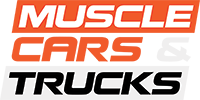Ford has just added the cylinder heads of the 760 horsepower supercharged 5.2L Predator V8 engine in the S550 Mustang Shelby GT500 to the Ford Performance catalog. The heads come with instructions for adding them to your run-of-the-mill 5.0L Coyote V8 engine found in the S550 Mustang GT and Mach 1 muscle cars. Officially billed as replacement parts for the current GT500, the cylinder heads are yanked from the same Canadian casting plant as the ones employed on the Shelby’s Predator V8.
Listed in Ford Performance’s catalog under part numbers M-6050-M52B for the left side and M-6049-M52B for the right side, each head will run you $2,095 each. The parts are “Gen 3” versions of the old 5.2L heads as used on the Coyote Aluminator engine. There’s another version of the 5.2L heads cast specifically as replacement parts for the GT350’s Voodoo 5.2L V8, but all three versions of these heads feature variations in valve train geometry.

The “Gen 3” Ford Mustang Shelby GT500 cylinder heads feature improved head castings which make for a stronger head with larger central cooling passages which can support higher horsepower engine builds. In case you forgot, the GT500’s 5.2L Predator V8 kicks out 760 horsepower at 7,300 rpm. The GT500 heads also have larger CNC milled intake and exhaust port sizes compared to 5.0L Coyote cylinder heads.
A big part of the GT500’s 760 horses are of course attributed to the supercharger, but the role of the valvetrain is critical for flowing that compressed intake charge in and out of the cylinders. The 5.2L GT500 heads feature 38.3 mm intake valves and 32.5 mm exhaust valves, compared to the “Gen 3” 5.0L Coyote’s 37.7 mm intake valve and 32 mm exhaust valve.
Sticking with the valvetrain, the S550 Ford Mustang Shelby GT500 heads use lighter weight hollow-stem intake valves and sodium-filled exhaust valves, along with stiffer exhaust valve springs, upgraded valve guides, and upgraded exhaust valve seats compared to the Coyote heads. The roller finger followers listed for the GT500 heads are the same ones listed for the 5.2L Aluminator Coyote engine.

The GT500 heads don’t include camshafts, rocker arms, or lash adjusters, that’s likely due to the varying applications these heads can be used for. Cams will be different if you’re looking to use these heads to crown a 5.0L Coyote compared to if they were being used in a 5.2L Aluminator or Predator application.
To use GT500 heads on 5.0L Coyote would require piston modification to keep the piston to valve clearance within spec, but luckily if you were looking to swap these onto your Coyote, Ford is happy to sell you all the parts required to make it work. The Variable Cam Timing system on the Coyote is compatible with the GT500 heads and replacement cams, but a custom calibration is required.






